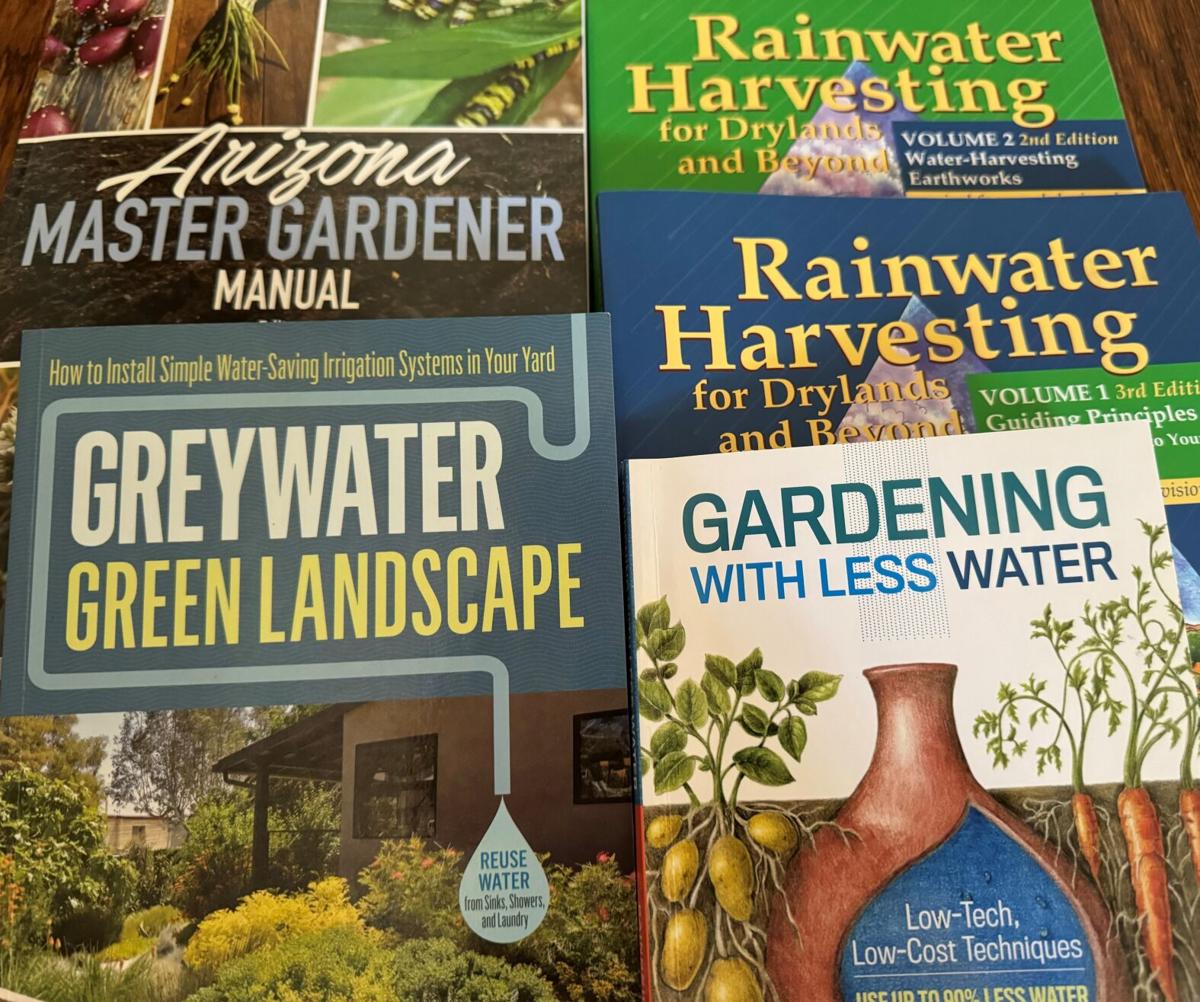One of the greatest challenges in desert gardening is figuring out your water use. Many of us don’t want to overuse water in our landscapes, and want to be responsible about our garden’s water requirements.
Of course native plants are the best starting place, since they are adapted to our desert conditions. Many can even go without supplemental water for most or all of the year once they are established.
However, even native plants will need some supplemental water as they get established (which can take up to three years). They will also need some water to look their best during our hottest and sunniest months. In addition, most gardeners will be growing at least a few non-natives, either for food production (like fruit trees) or for ornamental purposes.
Before you decide to plant a garden, or a section of your garden, it’s a good idea to start with the water. For many cases, drip irrigation will be the simplest to set up. Keep in mind, however, that when we irrigate we do so with treated water that is fit for drinking. That’s an awful lot of resources going into our gardens. National surveys show that around 30% of our total residential water use is for landscaping in most parts of the country. In Arizona, however, 70% of our water is used outdoors (although this includes swimming pools, not just gardens).
Fortunately, there are several other alternatives, which do not require as much use of treated drinking water. These include using greywater, which essentially recycles treated water from our bathtubs and laundry systems; using rainwater, which I have discussed in two previous articles, and using alternative irrigation methods such as ollas to water your landscape.
For most gardens, you will want a combination of several systems, and you will likely need to tweak it from time to time as your garden changes. If all that sounds overwhelming and complex, don’t worry. Here are some books and other resources to take you through the process.
"Grey Water Green Landscape" by Laura Allen: This excellent resource has everything you need (and more) to design and install a greywater system in your house. From helpful definitions to thorough diagrams, examples of successful systems and advice on plumbing codes and regulations, this book is the most thorough resource I’ve come across for setting up greywater irrigation. You can choose to go with a laundry-to-landscape system (which is pretty straightforward) or take a look at more complex, whole-house systems.
"Gardening With Less Water" by David A. Bainbridge: This book was the first one I found that focuses on low-cost simple techniques. Most of the book focuses on simple systems that anyone can set up such as DIY ollas that you can make from inexpensive clay pots. The author also covers wicks, buried pipes with holes, porous hose and other techniques which have been used in less-developed countries for decades. There is also a helpful second part of the book which discusses tips for rainwater harvesting, water-wise gardening and planning out a low-water garden.
"Rainwater Harvesting for Drylands and Beyond," Vol. 1 and 2 by Brad Lancaster: I know I may sound like a broken record, but these books by Tucson’s own Brad Lancaster are the definitive guides to active and passive rainwater harvesting. In here you will find everything you need to convert your garden into an efficient water-storing machine. Volume 1 covers all of the basic principles and takes you through every type of rainwater harvesting system. Volume 2 is a deep dive into passive rainwater harvesting and the different earthworks structures that can be used in different types of topographical landscapes. If you have the older editions, it’s worth it to get the newer editions for the improved color figures and tables. Lancaster’s excellent website provides many of these resources as well, and is well-worth checking out.
Garden irrigation resources from the University of Arizona
Irrigating with Ollas: This is a helpful overview of ollas and their role and uses in irrigation. It focuses more on agricultural use, but is still a good primer.
Drip Irrigation: The Basics: This is a basic guide that reviews drip irrigation systems and their components.
"Arizona Master Gardener Manual," Chapter 16: Irrigation: This manual is a great resource for serious gardeners, and the chapter on irrigation has excellent details on designing and installing drip irrigation systems.
The warm weather has finally arrived, which unfortunately also brings mosquitos. Here’s how you can keep them away.





